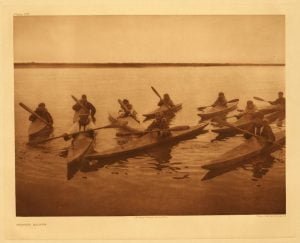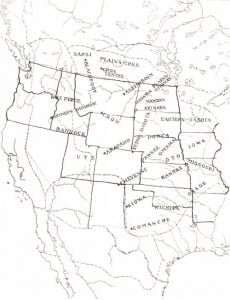Eskimos
There is little, besides some analogies in language, to connect the uncouth race which forms the subject of this chapter with the inhabitants of the more genial climates of North America. The Esquimaux (Eskimos) are spread over a vast region at the north, dwelling principally upon the seacoast, and upon the numberless inlets and sounds with which the country is intersected. There is a striking similarity in the language, habits and appearance of all the tribes of the extreme north, from Greenland to Bhering’s Straits. The Manners and Personal Appearance of Eskimos Charlevoix gives a very uninviting description of their … Read more






